You can make 100% Sprouted Whole Wheat Burger Buns that are light and fluffy!
In this recipe, you’ll learn how to work with sprouted wheat flour to make the healthiest hamburger buns for your family.
It’s so versatile you can shape it into hot dog buns and sandwich bread too!
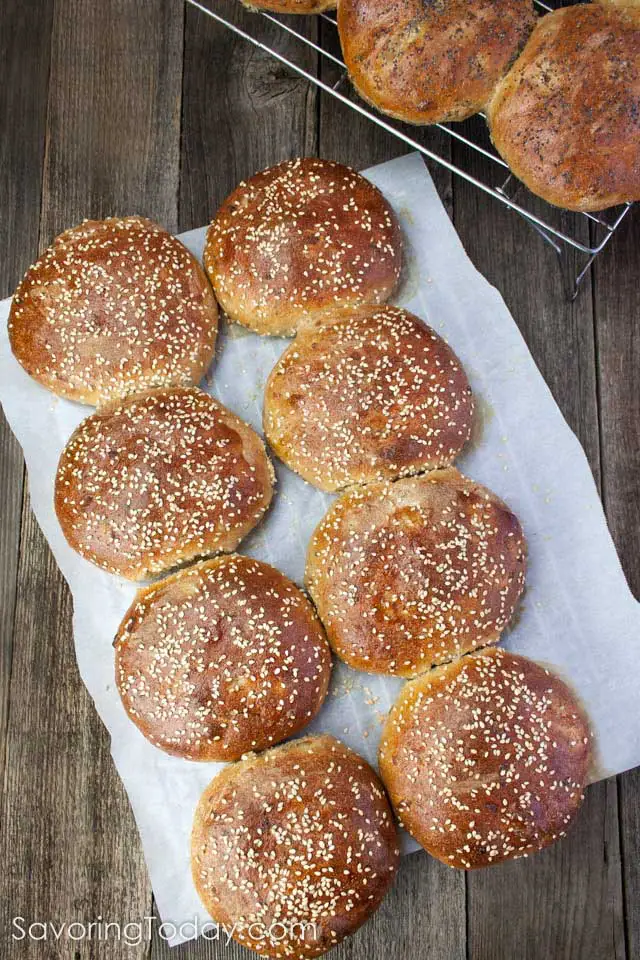
The thought of Sprouted Wheat Burger Buns might stir memories of disappointment, if not a solemn vow not to spend six dollars on hockey-puck bread again.
Who wants a beautifully grilled burger on tough, dry bread? Not me.
I missed having great buns for our burgers, BBQ chicken, and pulled pork—brushed with butter and toasted right on the grill with crisp edges and a soft interior.
But then I learned the secret to making 100% whole wheat bread so soft and delicious we buttered and ate them before they could even cool.
These buns have a rich flavor and soft texture so different from any sprouted wheat you’ll find in stores. I just love it when good for you food tastes this good! So good, you may just grab the butter and forget the burgers. 😉
We love these sprouted wheat buns for all our sandwiches, including Ruebens, burgers, and BBQ chicken or pulled pork (image).
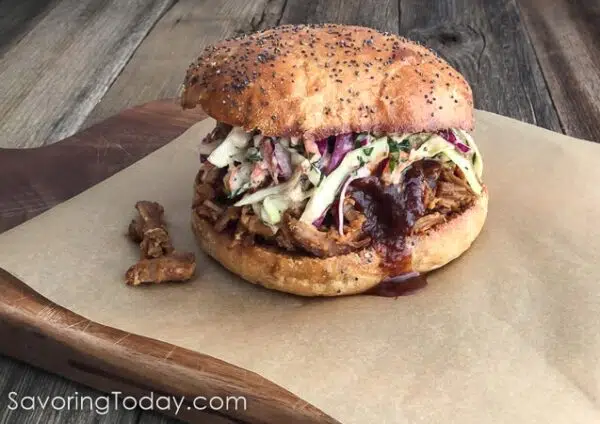
This post may contain affiliate links. See our disclosure policy for more information.
Three Keys to Making Light & Fluffy Sprouted Wheat Buns
- Sprouted White Whole Wheat Flour. You absolutely can make this recipe with any sprouted whole wheat flour. However, I highly recommend the white wheat variety. White and red wheat have the same levels of nutrition, but white has a sweeter, mild (less wheat-y) flavor and produces a lighter texture in soft baked goods like rolls and pastries.
- Patience. The trick is to be patient during the folding process and allow the flour to absorb the liquid in the recipe, and you may need to let it rise a little longer.
- Resist the urge to add more flour. The dough is sticky, so you’ll be tempted to overcome the stickiness with more flour, but if you do that, the finished product will be heavier and dry. Pay close attention to whether it is “holding its shape” as described in the recipe. Once the dough slump is minimal, it’s time to switch from flour to oil.
TIP: You can shape this same recipe to make sliced sandwich bread, and hot dog buns too!
How does sprouting make the wheat better for you?
- Sprouting naturally manufactures vitamin C and increases vitamin B, carotene levels, and minerals.
- It makes digestion easier because sprouting initiates the digestion process, breaking down the complex sugars, and making the vitamins and minerals more bio-available.
- Improves glycemia by lowering glucose response and increasing GLP-1 response. See Study.
- Neutralizes enzyme inhibitors and reduces phytic acid (an anti-nutrient) that inhibits the absorption of calcium, magnesium, iron, copper, and zinc.
Sprouted wheat is a healthy whole food alternative to eating empty white flour carbs.
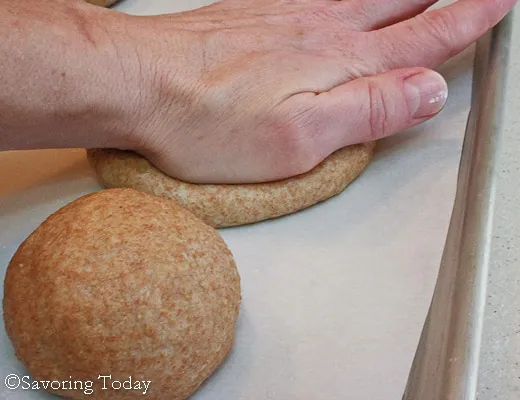
Is Sprouted Wheat Flour Gluten-Free?
Sprouted wheat is NOT gluten-free. However, because of its lower starch content, some people who have been on a gluten-free diet due to gluten sensitivity have been able to eat sprouted flour.
It is not appropriate for those with celiac disease.
Is Sprouted Wheat Low-Carb?
Sprouted wheat would not be included in a strict low carb diet in most cases, though some on a moderately low carb diet enjoy sprouted wheat bread for the occasional treat.
Is Sprouted Wheat Paleo Friendly?
According to Loren Cordain, Ph.D., founder of The Paleo Diet® Movement and author of the “The Paleo Diet”, one can consume sprouted grains without fear of anti-nutrients. He goes on to say while it is okay to consume sprouted grains, they are still nutritionally poor in terms of micronutrients. Leafy greens and other vegetables contribute high fiber AND a higher concentration of nutrients.
Is Sprouted Wheat Keto Friendly?
Bread is not included in a Keto diet. However, sprouted wheat bread can be included in a cyclical keto diet (CKD) and is best suited for athletes with a demanding training schedule and who require glucose for their bodies to recover and function properly.
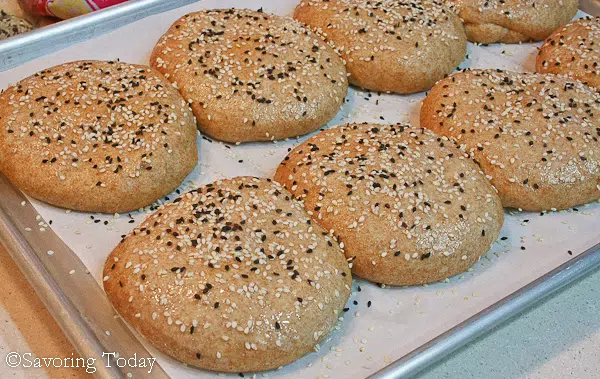
Where can I buy Sprouted Wheat Flour?
Sprouted flours are available from numerous sources now. I’ve written about my favorite sources in my Sprouted Wheat Cinnamon Roll Recipe, including price and shipping considerations.
Can I Use Regular Whole Wheat Flour as a Substitute in This Recipe?
Yes, whole wheat flour can be substituted for sprouted wheat flour in this recipe. You will still have lighter, fluffier results using white whole wheat flour (white winter wheat) and following the methods shown in the recipe video.
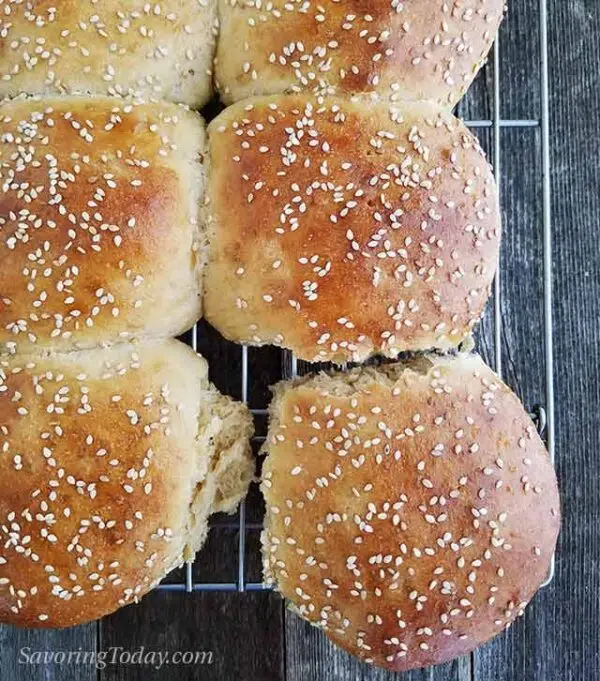
Sprouted Wheat Bun Recipe Variations
Caramelized Onion Sprouted Buns boast the sweet-savory flavor of caramelized onions with a pinch of poppy seeds in every bite.
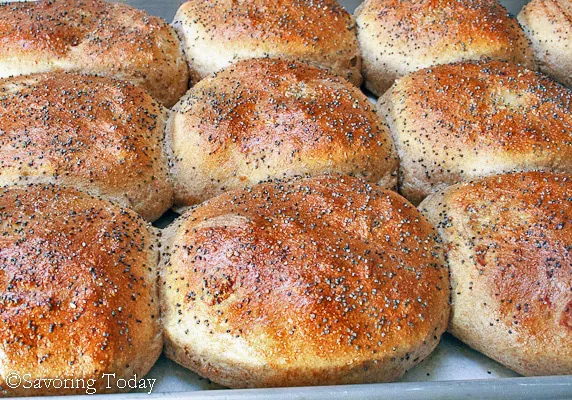
Sprouted Wheat Sliders Buns are exactly half the size of our sprouted wheat burger buns—ideal for parties, kid-friendly, and they make it easy to cut carbs and portion size too.
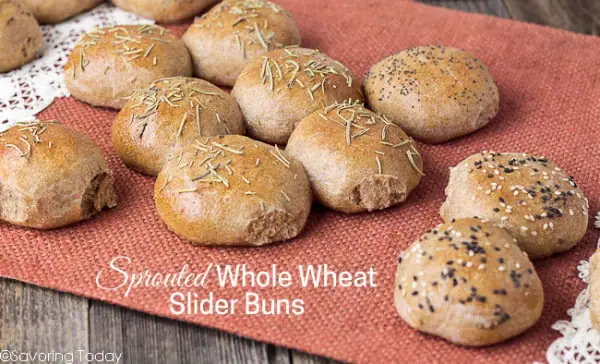
Sprouted Rye Sandwich Buns include crushed caraway seeds in the dough and a generous sprinkle to dress the tops.
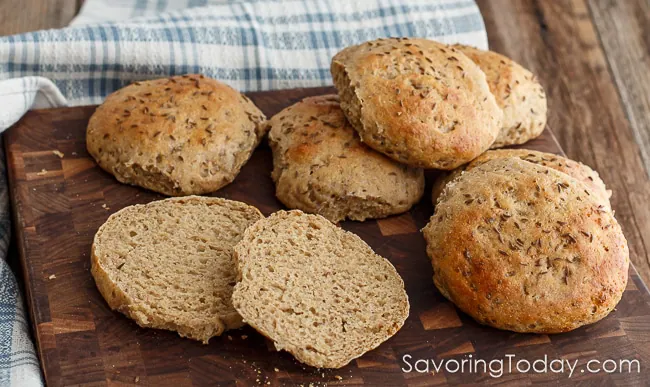
Hot Dog Buns are simple to shape from this same recipe. See recipe notes for instructions.
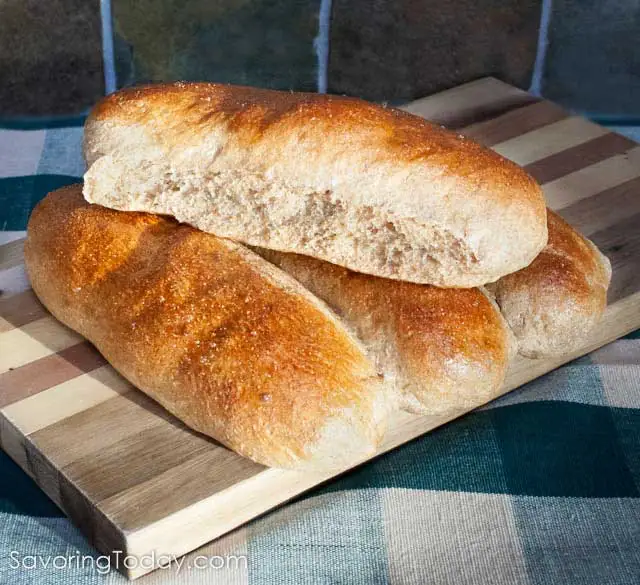
Sprouted Whole Wheat Sandwich Bread is as simple as forming a different shape from the same dough. See recipe notes for instructions.
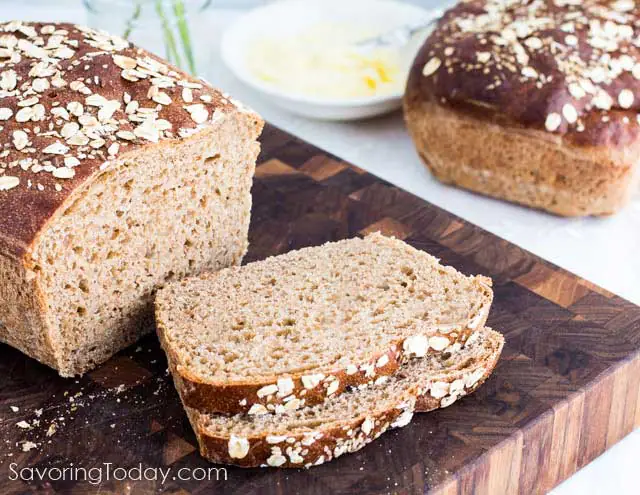
More Sprouted Wheat Recipes You’ll Love
- Sprouted Wheat French Bread
- Sprouted Wheat Cinnamon Rolls
- Sprouted Wheat Bagels
- Sprouted Wheat Focaccia
- Sprouted Wheat Buttermilk Biscuits
- Sprouted Wheat Dinner Rolls
- Sprouted Whole Grain Corn Bread
- Sprouted Wheat Banana Walnut Muffins
- Sprouted Wheat Zucchini Bread
Light & Fluffy Sprouted Wheat Burger Buns
Ingredients
- 2 cups water 110-115°
- 1 1/4 ounce package active dry yeast [2 1/4 teaspoons]
- 1/4 cup honey
- 5 1/2 cups sprouted white whole wheat flour
- 2 tablespoons melted butter
- 1 egg
- 1 egg yolk
- 2 teaspoons sea salt
- 1 egg white , reserved
- sesame seeds, caraway seed, or poppy seeds, or rolled oats , optional
- avocado oil , or extra-virgin olive oil
Instructions
Using a Stand Mixer: (This can also be mixed with a spoon and kneaded by hand.)
- In the mixer bowl, sprinkle 1 package yeast over 2 cups warm water (110-115°F) and 1/4 cup honey; let stand for 5 minutes to soften and bloom yeast. While yeast rests, prep a bowl or proofing tub with a little oil for the dough in step 4 by spreading the oil in a thin layer inside the bowl.
- Using the paddle attachment, mix in 2 tablespoons butter, 1 whole egg, 1 egg yolk (reserve egg white), and 2 1/2 cups of the flour on medium-low speed until smooth. Drape with a towel and let dough rest for 20 minutes.
- Add 2 teaspoons sea salt and enough of the remaining flour (1/2 cup at a time), mixing 1 minute after each add, to form a soft, shaggy dough (up to 5 1/2 cups total – humidity can affect the amount of flour it will take). Once the dough holds it's shape (though sticky) and is stable on the mixing paddle, spread 1/4 cup of flour out on the counter and sprinkle on dough. (See recipe video for demo.) With floured hands, knead dough by folding over and turning 4 or 5 times to form a soft ball that holds its shape and no longer slumps. Scrape any remaining flour from the counter and spread 1 tablespoon of oil on the counter. Leave the dough to rest on the counter and cover with a bowl for 5 minutes. With oiled hands, fold the dough 4 or 5 times again, and cover with the bowl to rest again for 5 minutes. Repeat one more time so the dough has 3 folding processes and 3 rests of 5 minutes each. This process allows the flour to fully hydrate. TIP: Because the dough can be tacky, use a pastry knife to help the dough release from the counter rather than adding more flour, which will make the dough heavy.
- While you shouldn't need to, at this point, if the dough is still is not holding its shape and is too wet to handle, add 2-3 tablespoons more flour and complete the folding process again with an additional 5 minute rest. Otherwise, after the three folding/resting cycles, if the dough is forming a soft ball and is manageable with oiled hands, place the dough in an oiled bowl, turning over so the oiled surface it face-up.
- Cover the bowl with plastic wrap and then a towel and let it rise in a warm spot (above 70°) for about 1 1/2 hours, or until nearly doubled in bulk. (The oven, with the oven light ON is a good place to let the dough rise if the room is cool.)
- With oiled hands, punch down dough and divide it into 16 pieces on a lightly oiled surface (It is ideal to use a kitchen scale to measure the dough and then divide by 16 for the ideal weight of even bun). Shape each piece into a round, smooth ball, place on a parchment-lined baking sheet, and flatten with the palm of the hand to about 3" across (it helps to have oil on your hands when flattening the buns). It is best if the sides of the buns touch when flattened. Cover with a lightweight smooth towel, tented aluminum foil, or inverted rimmed baking sheet if the room is drafty. Let rise about 40 minutes, or almost doubled in size. (Because the dough can be tacky, avoid covering with terry cloth or microfiber cloth towels, which can "grab" the top of the dough.)
- Just before placing in the oven, brush the buns gently with the beaten egg white on all exposed sides, sprinkle with sesame seeds. Alternatively, brush with melted butter once the are baked and removed from the oven for soft, matte finish.
- Bake the buns at 375°F until golden in color 16-18 minutes, or until the interior registers 190°F using an instant-read thermometer. Cool the buns on the pan on a wire rack for 10 minutes, then remove from pan and cool completely on the wire rack. Slice once completely cooled.
Video Displays Here or In Post
Notes
- The egg wash helps the seeds to stick and give the buns a shiny crust. Brush with melted butter for a soft, matte finish.
- The weather and type of flour can have an impact on the feel of the dough and how tacky it feels. Avoid adding a lot of extra flour to the dough to make it more manageable. Instead, use a pastry knife to scrape and lift it when kneading or switch to an oiled surface and oil for your hands to manage the dough.
- For high altitude, it may take less flour and a shorter rise time, closer to 5 cups of flour and one hour to rise. Yeast breads can be sensitive to humidity, so the amount of flour will vary.

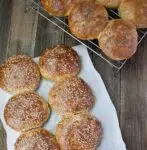
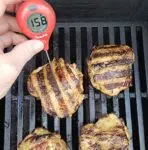
Karen Smith says
Amazing recipe! This is the type of flour that is recommended for type 2 diabetics. Unfortunately in Canada we cannot get white sprouted whole wheat flour but I made it with red sprouted whole wheat flour and they are so fluffy and light. Fortunately, we aren’t missing our light white delicious but unhealthy brioche buns anymore for our hamburgers because of this awesome recipe!!!
Thanks for sharing this with all your tips.
Judy Purcell says
Hi Karen, thank you so much for taking the time to let me know your family enjoyed the burger buns! That makes my day!
Steve Bowen says
This page is terrible. Never mind the desity of the adds guarantees that I look at none of them. But the print page automatically clicking back to this page without giving me the opportunity to select my print settings makes the whole feature useless.
Judy Purcell says
Hi Steve, sorry you were having issues with the print recipe feature. I’ve checked it out to make sure it’s working. Sometimes individual browsers can interfere too, so be sure to check settings on your end. The ads allow us to keep the recipes and information free to our readers, but we still appreciate the feedback about your experience.
Janice says
These are the BEST hamburger buns HANDS DOWN. We LOVE them!! They may take a little extra time but worth every single minute!
Judy Purcell says
Hi Janice! I completely agree! Thanks so much for taking the time to let me know how they turned out for you and that you LOVE them—that makes my day!
Cait says
These were GREAT. Fluffy and fantastic for the fried chicken burgers we made tonight. Thanks for the recipe!
Judy Purcell says
Hi Cait, thank you so much for letting me know how much you enjoyed the buns! It really makes my day to hear from readers and to somehow be part of their dinnertime successes. 🙂
Janice says
I made these buns 2x and they DO NOT DISAPPOINT!! They are soft, tasty and easy to make!! The entire family LOVED them!
thank you for testing all the flours and making these sprouted I keep in freezer and pull a few out as desired!
Judy Purcell says
Hi Janice! Thank you so much for taking the time to let me know how much you’re loving this bun recipe. It really makes my day to know your family enjoys them so much! I’m sure they appreciate all you do to feed them so well too. 🙂
Nella says
This is truly the best hamburger bun recipe ever. I used to be able to buy the most workable buns (whole grain) from Alvarado bakery – but then most stores in my town stopped carrying – sob! So I started looking for recipes – made some pretty bad buns. These are the BEST and are not much hands on time, really – only the 16 blobs of dough measuring is a bit tedious but totally agree best to have equal portions. Worth the effort!
Judy Purcell says
Hi Nella, your experience sounds like my own — trying to find delicious truly whole grain buns in the store was nearly impossible AND these are the BEST homemade whole grain buns around. 🙂 Thank you for taking the time to let me know how much you enjoyed them!
Rachael says
Hello! I was wondering if I could use regular whole wheat flour for this recipe and would that affect the softness??
Judy Purcell says
Hi Rachel, yes you can use regular whole wheat flour for the recipe. I have found every type of flour to be slightly different (red wheat, white wheat, sprouted, stone ground, fine ground), but overall, all whole wheat flour benefits from allowing time for the flour to absorb the liquid (like waiting the 20 minutes after the first addition of flour), as well as allowing a longer rise time if needed. If you have any other questions, do let me know, and please tell me how you liked them. 🙂
Meghan says
I made these yesterday for hamburgers and they were delicious! Everyone loved them. We are excited to have leftovers today to make sandwiches. This was only my second time making any sort of homemade bread and though time consuming, it was an easy recipe to follow.
Judy Purcell says
Hi Meghan! I am so delighted to hear how much everyone loved the buns! I am also glad to hear you found the recipe easy to follow even though you hadn’t made bread much before — that kind of feedback is so helpful. 🙂 Thank you so much for taking the time to stop back by and leave a note to let me know, it makes my day.
Clare E Shemeta says
Purrfect! Could not find sprouted whole wheat WHITE flour. Made with 1 c white and the rest whole wheat sprouted flour. Came out great.
Judy Purcell says
Hi Clare! Thank you so much for letting me know the recipe worked out so well for you even with a slight change. I’m so glad to hear you loved the buns – that makes my day!
Mirlene says
New favorite bun recipe. Perfect for sandwiches, burgers, or a simple peanut butter sandwich for the kiddos.
Judy Purcell says
So glad to hear that! Thanks for stopping by to let me know you liked it. 🙂
Jean says
I love sprouted anything because it’s so much easier for my digestion! Can’t wait to give this a try.
Erin says
I loved all the questions and answers your included! I didn’t know all that. And wow, these look like they have the perfect texture!
John / Kitchen Riffs says
These look so good! The PERFECT burger bun. Thanks!
ChihYu says
A healthy burger bun that looks and tastes great! So versatile!
paleoglutenfreeguy says
Well these look pretty much perfect! Like store-bought but much fresher!
heather says
I’ve been looking for “THE” hamburger bun that my family would love! I think that I have finally found it with this sprouted version. Thanks for the tip on white wheat vs. read wheat. That may have been our problem 😉
Raia says
All those buns look delicious! I’m sure my family will enjoy them!
Megan Stevens says
I so appreciate sprouted recipes, thank you! (There aren’t enough!) Pinned.
Jason says
If you have the nutritional value of the hamburger buns, will you please share it? Thanks, and these look delicious.
Joyce says
Hi,
these buns look great. i have just started to bake with a sourdough starter. do you think I will be able to use it instead of the yeast and if so how much? Thank You Joyce
Judy Purcell says
Hi Joyce, that’s a great question. Here are a couple of helpful sources: The Fresh Loaf: http://www.thefreshloaf.com/node/5569/converting-recipe-uses-instant-yeast-sourdough-starter-recipe and Cultures for Health: http://www.culturesforhealth.com/how-to-adapt-any-recipe-become-sourdough-recipe
Let me know if you try it!
Cassie says
I know about the benefits of sprouted grains but for right now I have whole wheat flour, would this substitute produce the same results?
Judy Purcell says
Hi Cassie, regular whole wheat flour should be a fine substitute. I have found every type of flour to be slightly different (red wheat, white wheat, sprouted, stone ground, fine ground), but overall, all whole wheat flour benefits from allowing time for the flour to absorb the liquid (like waiting the 20 minutes after the first addition of flour), as well as allowing a longer rise time if needed. If you have any other questions, do let me know, and please tell me how you liked them. 🙂
Brandi says
Hi, this recipe looks great, but unfortunately I can’t have honey or butter. Any suggestions for substitutions? Thanks!
Judy Purcell says
Hi Brandi,
You can try using coconut oil, just reduce the amount to 1 tablespoon in place of the butter. Do you have an allergy to honey or are you avoiding sugar all together? If it is specifically honey you cannot have, try coconut palm sugar as a substitute. If you are avoiding sugar, Xylitol (wood derived) can be a good substituted for sweeteners. Of course, you can leave the sweetener out all together — the honey helps activate the yeast and most people like a little sweetness in rolls or hamburger buns to differentiate from regular bread — but it is optional. Hope that helps. 🙂
Claire says
Can I use coconut oil instead of butter? I don’t eat butter and finding a sprouted wheat burger bun recipe is hard enough, but finding one without butter is nearly impossible lol
Judy Purcell says
Hi Claire, that’s a great question. I have noticed that butter and coconut oil are not always equal in baked goods. Although I haven’t made a batch with coconut oil to know for sure, in my experience, coconut oil if subbed one to one can produce a heavier result. I think it’s why it works great in brownies while not so great in cookies. Anyway, I would reduce the amount to just 1 tablespoon. Please let me know how they turn out! 🙂
Joanna says
These are my new favorite “bread” recipe!! So flavorful and soft and go perfect with anything and everything :)) Thanks for sharing!!
Cupcakemom777 says
I tried these and they turned out really well. I used a bit more flour than listed so they were not sticky. Thanks for the recipe! BTW, if you have a dehydrator you can sprout your own wheat and then dehydrate it. Then grind it. That’s what I do and it saves a lot of money!
Judy Purcell says
Hi, thanks so much for letting me know that you tried them, the feedback is so helpful! Yes, I do have a dehydrator and I have sprouted, dried, and ground grain at home. For us, we really do not eat grains all that often, so I was okay with purchasing the flour as I need it. However, you are so right–it is far less expensive to purchase the grain and do it yourself.
I am so pleased you liked the buns! 🙂
sportsglutton says
Great buns Judy…can I say that? Seriously though I can already see one of my gluttonous burgers being sandwiched by this bread. Delish!
Judy Purcell says
Jed, that was funny. I thought of your tri-tip burger when I made these. I may have to do a burger round up one of these days.
Raymund says
I hope I have the patience in making one of this soon, I always buy my buns but this certainly had inspired me
Pure Complex says
I LOVE wheat buns.. and they are always so hard to find when you go tot he supermarket. So I am grateful to find this recipe. Thanks for sharing this with us
Karen says
Wow! I can’t wait to try these. I have tried baking breads with sprouted flour and they always turn out doughy in the middle no matter how long I bake them. I have been wanting to try again and this is the perfect recipe to start with.
Thanks
Judy Purcell says
I know exactly what you mean about sprouted grains producing doughy results. These turned out perfect for me. I am at high altitude, baked products here can be temperamental due to dry or humid conditions. I would love to hear how they turn out for you!